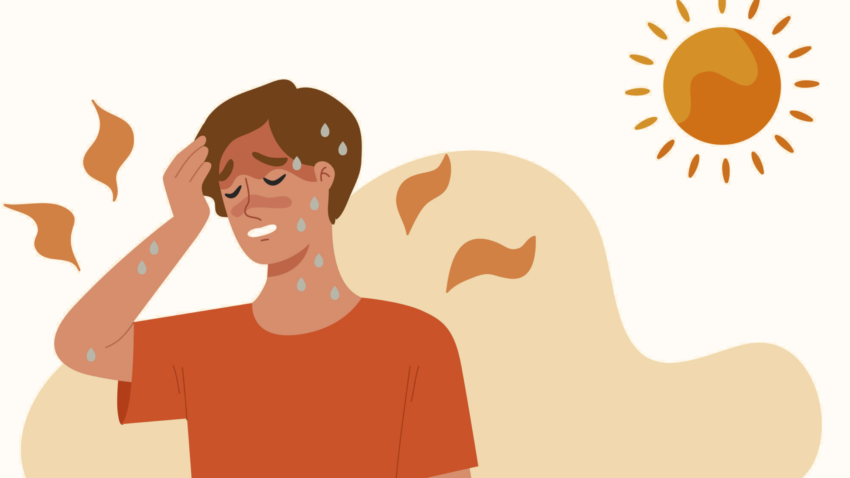
What is the treatment for sunstroke ?
Sun Stroke
Sun stroke, also known as heat stroke, is a severe form of hyperthermia where the body temperature rises above 104°F (40°C) due to prolonged exposure to high temperatures, often accompanied by dehydration.
Causes
- Prolonged exposure to high temperatures, especially with high humidity.
- Vigorous physical activity in hot weather.
- Wearing excessive clothing or heavy equipment in the heat.
- Dehydration, which reduces the body’s ability to sweat and maintain a normal temperature.
Symptoms
- High body temperature (above 104°F or 40°C).
- Hot, dry skin or profuse sweating.
- Confusion, agitation, slurred speech.
- Nausea and vomiting.
- Rapid heart rate and breathing.
- Headache.
- Dizziness or light-headedness.
- Loss of consciousness or seizures.
Risk Factors
- Age (infants, children, and elderly are more susceptible).
- Chronic illnesses (heart, lung, kidney disease).
- Medications (diuretics, antihistamines, antipsychotics).
- Lack of air conditioning.
- Sudden exposure to hot weather, especially after cooler conditions.
Prevention
- Stay hydrated by drinking plenty of fluids.
- Avoid strenuous activity during the hottest parts of the day.
- Wear lightweight, loose-fitting clothing.
- Use sunscreen to prevent sunburn, which affects the body’s ability to cool itself.
- Take cool showers or baths.
- Spend time in air-conditioned environments when possible.
- Acclimate to hot conditions gradually.
Treatment
- Call emergency services immediately if heat stroke is suspected.
- Move the person to a cooler environment.
- Remove excess clothing.
- Cool the person rapidly using whatever methods are available (e.g., cool bath, wet cloths, ice packs).
- Offer fluids if the person is conscious and able to drink.
Complications
- Organ damage (brain, kidneys, heart).
- Rhabdomyolysis (breakdown of muscle tissue).
- Coma.
- Death, if not treated promptly and effectively.



Leave a Reply